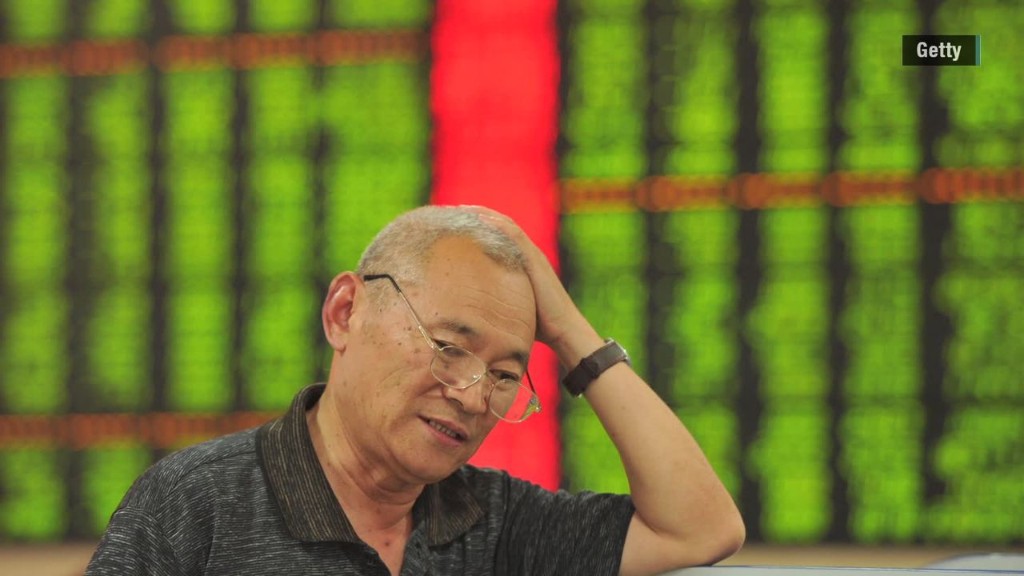
China stocks may be pulling out of their tailspin.
The benchmark Shanghai Composite increased 4.5% on Friday, while the smaller Shenzhen Composite added more than 4%.
The performance builds on gains made Thursday, when markets rallied after regulators announced new measures designed to stop the market's slide.
Since June 12, the Shanghai Composite has lost roughly 30%. The Shenzhen market, which has more tech companies and is often compared to America's Nasdaq index, is down nearly 40% over the same period.
Roughly half of the companies traded in China have elected to pull their shares as markets continue their crazy roller-coaster ride. That wouldn't be allowed in the U.S., but it's permitted in China.
Related: China's stock market crash ... in 2 minutes
The government is doing everything it can to rescue the markets. The People's Bank of China has cut interest rates to a record low, brokerages have committed to buy billions worth of stocks, and regulators have announced a de-facto suspension of new IPOs.
The government-backed China's Securities Finance Corporation -- known as CSF -- is lending billions to big Chinese brokerage firms so they can buy more stocks. Controlling shareholders and board members have been barred from reducing share holdings via the secondary market for six months.
Related: All of CNNMoney's China stocks coverage
Over the past year, investors poured more and more into Chinese markets. Retail investors -- think mom and pop, average folks -- were the most enthusiastic. A classic bubble developed.
The most compelling theory why the bubble burst: Chinese economic growth is the weakest it's been since 2009. Share prices got way ahead of growth and company profits, which are actually lower than a year ago.


